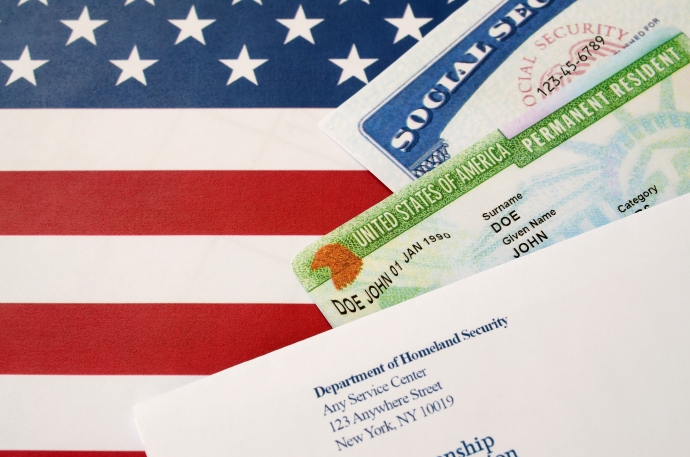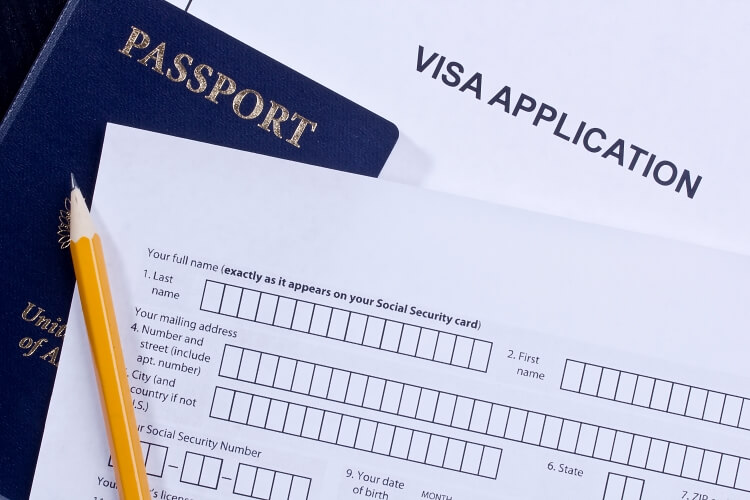U.S. Immigration: How To Become A Lawful Permanent Resident
As a foreign national, being a lawful permanent resident is key to continuing to reside and work in the U.S. However, it does not yet give you the rights and freedoms the government provides its citizens.
The Lawful Permanent Resident status is still revocable in many aspects. For instance, you can still lose your permanent residency if you commit certain crimes or law violations. That is why knowing the grounds and nature of your LPR status is essential. To comprehensively understand lawful permanent residency, it is wise to speak with a dependable immigration lawyer.

Lawful Permanent Resident
A lawful permanent resident is commonly referred to as a green card holder. They have been granted the legal status to live and work in the United States permanently, but they are not U.S. citizens.
To become a permanent resident, an individual must undergo a lengthy and often complex immigration process. It usually involves meeting specific eligibility requirements, submitting various forms and supporting documents, and undergoing background checks. Some common ways to obtain the status include family sponsorship, employment-based sponsorship, refugee or asylum status, and investment-based programs.
Once an individual becomes a green-card holder, they are granted several important rights and benefits, including the right to live and work in the U.S. without any time restrictions, the ability to apply for a social security number and driver’s license, access to education and healthcare services, and the opportunity to apply for U.S. citizenship after meeting certain eligibility requirements.
However, lawful permanent residents are also subject to responsibilities and restrictions. They must follow all U.S. laws and regulations, pay taxes, and always carry their green card or other proof of LPR status. Additionally, they can lose their status and face deportation if they commit certain crimes or violate immigration laws.
It’s important to note that while permanent residents enjoy many benefits, they do not have the same rights and privileges as U.S. citizens, such as the right to vote or hold certain government jobs. Therefore, they must understand their legal rights and responsibilities and seek legal advice if they have any questions or concerns about their immigration status.
When Does An Individual Become An LPR?
There are several broad admission categories under the Immigration and Nationality Act (INA) for foreign nationals seeking permanent resident status. The largest of which concentrates on allowing immigrants to reunite with their families. Immigrants from nations with relatively low levels of immigration to the U.S. and those who come for humanitarian or economic reasons are other significant categories.
The day you officially become a lawful permanent resident is when you get an approved immigrant visa, or the USCIS approves your application for status adjustment. However, there are exceptions under the law. The actual date may come before the day the USCIS approves the change of status. It can be earlier than the date of status adjustment. The date, in this case, is referred to as the rollback date.
A rollback date applies to refugees already in the U.S. or actively seeking U.S. admission. Their effective date of permanent residency will be one year before the date their application is approved.
It’s important to note that obtaining this status can be complex and may require meeting specific eligibility requirements, submitting various forms and supporting documents, and undergoing background checks. Seeking legal advice from an experienced immigration attorney is recommended to navigate the intricacies of obtaining and maintaining lawful permanent residency in the United States.
Confirmation Of LPR Status
Successful lawful permanent residency applicants are issued a Permanent Resident Card (PRC), also known as a “green card.” It serves as official documentation of a noncitizen’s legal status as a permanent resident in the United States.
According to U.S. law, permanent residents who are 18 or older must always carry their PRCs, as they may need to prove their residency in certain situations. The PRC contains basic information such as the date of LPR status and the individual’s classification, which authorities can use to verify their immigration status.
If a PRC is lost, Form I-90 can be submitted to request a replacement card. Alternatively, when a PRC is near expiration, Form I-90 can also be submitted up to six months before the expiration date to request a renewal. In such cases, the U.S. Citizenship and Immigration Services (USCIS) may issue an Alien Documentation Identification & Telecommunication (ADIT) stamp as temporary proof of the person’s permanent residency status. It’s crucial to promptly request a replacement or renewal of a PRC to ensure that one has valid documentation of their lawful permanent residency in the United States.
Responsibilities As A Lawful Permanent Resident
After having permanent residency status, you are entitled to perform various responsibilities. These include:
- Filing income tax returns in the U.S. as a regular resident.
- Abide by the state and local laws.
- Rendering voluntary admission to Selective Service members (if you are a male and between ages 18 through 25).
- Support governmental actions and its democratic system.
- Notifying the USCIS of any address changes through the submission of AR-11.
To maintain permanent residency status in the U.S., lawful permanent residents must be aware of the immigration authorities’ scrutiny of extended periods spent abroad. It includes ensuring a valid Permanent Resident Card (PRC) and passport and considering applying for a reentry permit if anticipating a lengthy absence.

Maintaining Permanent Residency Status
The immigration authorities closely scrutinize extended periods spent abroad (typically more than six months) to determine if the individual has abandoned their intention to make the U.S. their permanent home. If you are absent from the U.S. for more than a year, your permanent residency may be assumed to have been abandoned, and overcoming this assumption can be challenging.
As a lawful permanent resident, you can travel outside the U.S. However, returning with an up-to-date Permanent Resident Card (PRC) and carrying a valid passport from another country while traveling is crucial.
If you anticipate being abroad for an extended period, applying for a reentry permit before your departure may be advisable. A reentry permit allows for a 2-year absence from the U.S. but does not guarantee admission upon return. Its primary purpose is to serve as evidence of your intent to permanently live in the U.S. and mitigate concerns about the abandonment of residency.
When Do Permanent Residents Become Eligible To Apply For U.S. Citizenship?
Permanent residents can apply for U.S. citizenship through naturalization after a specific period, usually five years in most cases and three years for spouses of citizens.
You should also note that there are other requirements that you must meet. Additional conditions for naturalization include:
- Certification of Good Moral Character.
- English test requirements.
- Knowledge of American history and government.
- Five years of continuous permanent residency in the United States before the application for naturalization, with at least two of those years spent physically in the country.
- Residence for at least three months prior to the application in the state or USCIS district where the application is made.
Seek Help From An Immigration Lawyer
Obtaining lawful permanent residency in the U.S. is a complex process that requires careful attention to detail. To avoid mistakes and delays, it is crucial to understand the requirements and terms associated with the status thoroughly. Connecting with an experienced immigration lawyer, such as the knowledgeable attorneys at Lincoln Goldfinch Law, can provide invaluable guidance throughout the application process.
Immigration attorneys can provide reliable advice on meeting LPR requirements, including the proper documentation, eligibility criteria, and necessary forms. They can also help LPR holders understand the conditions they must meet to retain their status, such as avoiding prolonged absences from the U.S. that may lead to the abandonment of residency.
Furthermore, if a decision of abandonment is made, immigration lawyers can assist in challenging such decisions and building a solid case for retention of Lawful Permanent Resident status. Dealing with the authorities alone, without proper legal knowledge, may result in costly mistakes and favorable outcomes.
By seeking professional assistance, you can minimize the risk of errors, delays, and additional fees, ensuring a smoother and more successful application process.
Summary
Lawful Permanent Residency in the United States grants foreign nationals the legal status to live and work in the U.S. permanently. However, it does not bestow the same rights and privileges as U.S. citizenship. LPRs must meet eligibility requirements, submit forms and supporting documents, and undergo background checks to obtain their status.
They enjoy several benefits, including the right to live and work in the U.S., applying for a social security number and driver’s license, accessing education and healthcare services, and applying for U.S. citizenship after meeting the requirements. However, they are also subject to responsibilities and restrictions, such as following all U.S. laws and regulations, paying taxes, and carrying their green card or proof of permanent resident status at all times.
Legal residents can lose their status and face deportation for committing certain crimes or violating immigration laws. It’s important for them to understand their legal rights and responsibilities and seek legal advice if needed.
Get Help From An U.S Immigration Attorney
How To Find Us



